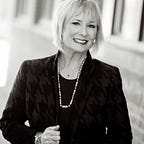Why Curiosity is Good for Business
This post is written for leaders who want to improve the organization’s performance by understanding the value of encouraging curiosity and creativity. Since curiosity/curious is a favorite concept of mine, I am sharing what I have learned.
When my sons were young, I told them they could not use the words “hate” or “bored.” While they may dislike something, they did not “hate” it. When they wanted to say they were bored, I said, “Don’t use the word ‘bored.” Use your creativity. Think of something to do or a better way to do it. Go create and be curious.”
There is no doubt that business conditions are changing so rapidly. It is hard for leaders to keep the vision in focus and to set priorities. In this environment, it is easy for leaders to be distracted and appear scattered and this sends confusing messages down the organization. People don’t really know how to spend their time and energy. The fear can be paralyzing at a time when organizations need to be innovative and take some risks.
According to a recent Harvard Business Review (HBR) article on curiosity:
“When curiosity is triggered, we think more deeply and rationally about decisions and come up with more creative solutions. In addition, curiosity allows leaders to gain more respect from their followers and inspires employees to develop more trusting and more collaborative relationships with colleagues.”
Research indicates leaders can encourage curiosity and leaders often say they value inquisitive minds and questions, but facts indicate most stifle curiosity — fearing it is too risky and will hurt efficiency. In one survey of more than 3,000 employees from a wide range of companies and industries, only about 24% reported feeling curious in their jobs regularly and about 70% said there are barriers to asking questions at work.
The HBR article included five ways to increase and encourage curiosity in the workplace.
- Hire for curiosity. Seek out people who are naturally curious by asking interview questions that provide some feedback. There are curiosity assessments to help determine if people explore things they don’t know, read widely, and are excited about learning.
- Model inquisitiveness. Leaders need to model being curious. Ask questions and deeply listen to the responses. Most leaders would rather talk and take action than to ask questions and listen. It is OK for leaders to admit they don’t know all of the answers. This allows room for intuition, creativity, and curiosity.
- Emphasize learning goals. While leaders need to focus on results, integrating learning goals (developing competencies or skills) demonstrates a learning or growth mindset and reflects lifelong learning.
- Let employees explore and broaden their interests. Allocate time and resources for employees to explore their interests. One senior leader I interviewed for my book Leading with Wisdom, shared how their organization gave employees a personal development fund to use in ways that would enrich their lives. People used it for yoga classes, graduate courses, a spa day, and the list went on. The idea was to empower people to use the funds to explore their interests. The results were positive and contributed to the company being awarded a Spirit at Work recognition.
- Have “Why?” “What if?” and “How might we?” days. Children naturally ask questions and Why is one of their favorites. Simon Sinek reminds us to continue to ask Why. In fact, I say answering why over and over is critical. Assume these questions: Why are we doing this? Why is this important? Use creativity to plan these days and how to encourage employees to ask questions. Use the onion test. It is said to ask why five times in order to get to the root of a problem — similar to peeling back the layers of an onion.
The bottom-line: Be curious and stay curious.
How much do you value curiosity?
How do you encourage and cultivate employees to have a sense of wonder?
How open are you to people asking questions?
How well do you demonstrate creativity and curiosity?
What could you be doing that you are not now doing to enhance curiosity?
